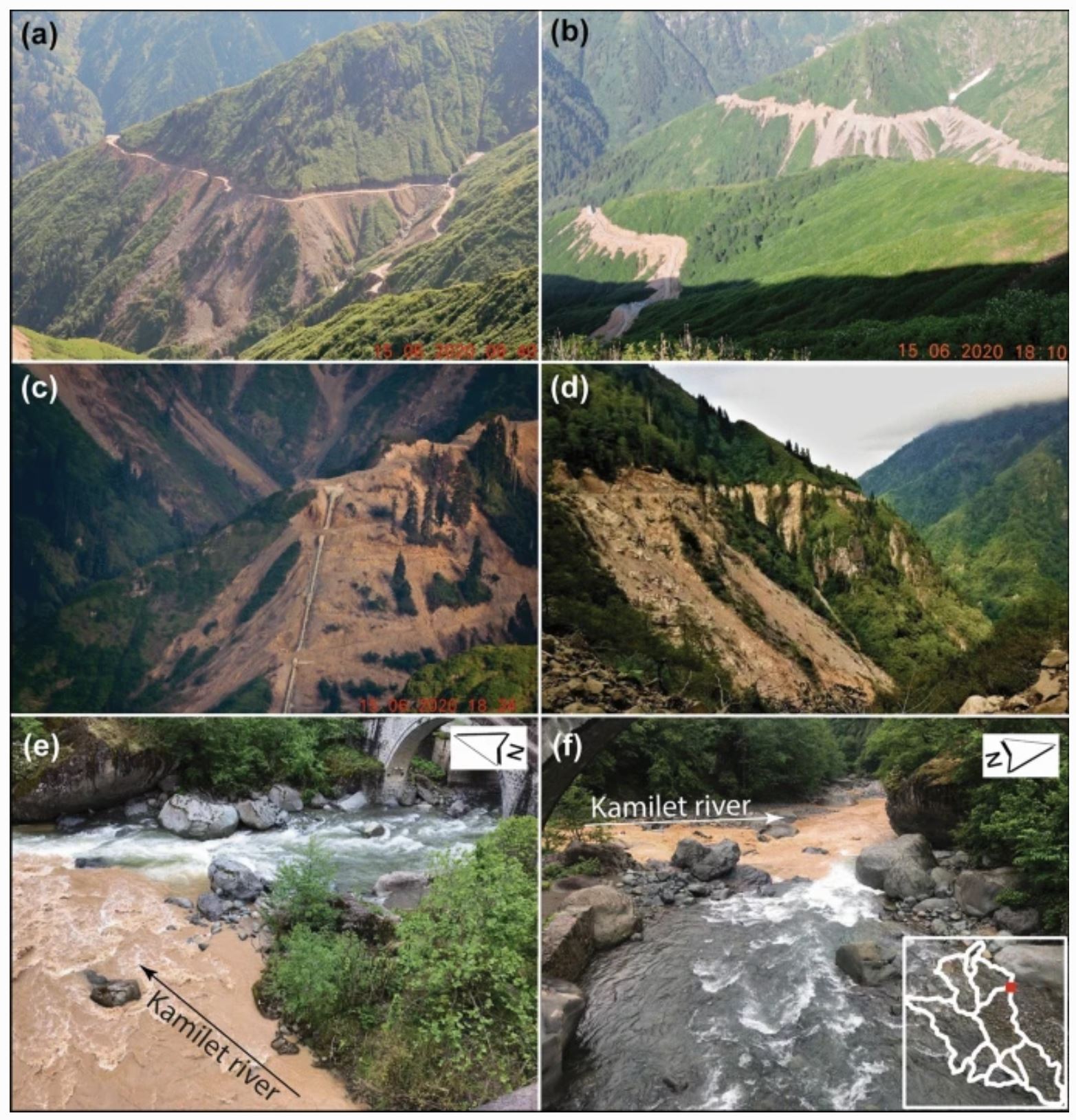18 January 2022
Arhavi, Turkey: the appalling landslide impacts of new roads
Posted by Dave Petley
Arhavi, Turkey: the appalling landslide impacts of new roads
Over the last two decades the appalling impact of poor quality road construction on landslides in upland areas has become increasingly clear. I have written about this issue in Nepal and India, but it is a global issue.
A really interesting open access paper has just been published in the journal Natural Hazards (Tanyaş et al. 2022) that highlights this issue in relation to a road constructed as part of the development of a hydroelectric scheme in Arhavi, Turkey. The paper comes to this stunning conclusion:-
“Our findings show that the damage generated by the road construction in terms of sediment loads to river channels is compatible with the possible effect of a theoretical earthquake with a magnitude greater than Mw = 6.0.”
The location of the study is in the area of 41.195, 41.364, from which the Google Earth image below is taken:

Google Earth image showing road related landslides in the Arhavi area of Turkey.
.
In this area a number of road projects have been undertaken since 2016, with the most notable providing the access routes to an under construction hydroelectric scheme. Tanyaş et al. (2022) have mapped the generation of landslides using imagery and ground truthing from 2010 to 2020. In the paper they provide some images of the impact of road-related landslides:-

Examples of road related landslides, and their impacts, in the Arhavi area of Turkey. Image from Tanyaş et al. (2022).
.
As the images above show, the construction of these roads has had a shocking impact on the slopes in an area of ecological importance. The released debris has migrated into the river channels, dramatically changing the sediment loads. In total Tanyaş et al. (2022) have mapped 557 landslides along 267.2 km of roads, 33.9% of which have been constructed over the last 11 years. The authors include this fascinating graph, which shows the increase in road length and the increase in road related and non-road related landslide area over the study period:-

The occurrence of new landslides in the Arhavi area of Turkey as a result of road construction. From Tanyaş et al. (2022).
.
The authors note the change in landslide area responds to periods of heavy rainfall – in other words, the roads establish the instability and rainfall then triggers the landslides.
Tanyaş et al. (2022) draw a very interesting comparison between their findings and the landslides associated with the 2013 Ms = 6.6 Minxian earthquake in China, which occurred in broadly similar terrain over a broadly similar area. They conclude that the landslide impacts of the earthquake and the road construction in terms of sediment supply into the river system are of a similar scale, although clearly operating in a different timescale.
The sad element of this is that these landslides almost entirely avoidable – such road related landslide impacts are down to poor engineering practice. Roads do not need to be built in this way, and there are plenty of examples of good practice from around the world.
.
Reference
Tanyaş, H., Görüm, T., Kirschbaum, D. et al. 2022. Could road constructions be more hazardous than an earthquake in terms of mass movement? Natural Hazards. https://doi.org/10.1007/s11069-021-05199-2.


 Dave Petley is the Vice-Chancellor of the University of Hull in the United Kingdom. His blog provides commentary and analysis of landslide events occurring worldwide, including the landslides themselves, latest research, and conferences and meetings.
Dave Petley is the Vice-Chancellor of the University of Hull in the United Kingdom. His blog provides commentary and analysis of landslide events occurring worldwide, including the landslides themselves, latest research, and conferences and meetings.
What is the necessary erosion control applications to reduce the adverse effect of the roads? Suggest it requires a guidance document what type of erosion control plans is required prior to the road construction, so the the erosion control measures can be installed as the road is being developed. An example of this rationale is found in BC Canada on the ministry of environment’s website. John Clark